Related Research Articles

Gertrude Stein was an American novelist, poet, playwright, and art collector. Born in Allegheny, Pennsylvania, and raised in Oakland, California, Stein moved to Paris in 1903, and made France her home for the remainder of her life. She hosted a Paris salon, where the leading figures of modernism in literature and art, such as Pablo Picasso, Ernest Hemingway, F. Scott Fitzgerald, Sinclair Lewis, Ezra Pound, Sherwood Anderson and Henri Matisse, would meet.
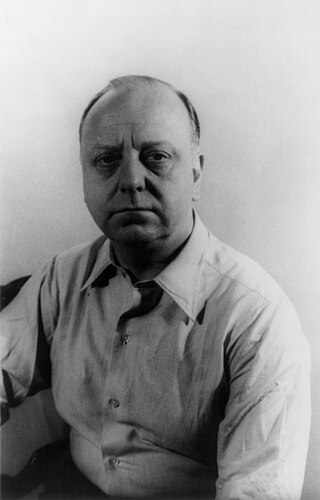
Virgil Thomson was an American composer and critic. He was instrumental in the development of the "American Sound" in classical music. He has been described as a modernist, a neoromantic, a neoclassicist, and a composer of "an Olympian blend of humanity and detachment" whose "expressive voice was always carefully muted" until his late opera Lord Byron which, in contrast to all his previous work, exhibited an emotional content that rises to "moments of real passion".
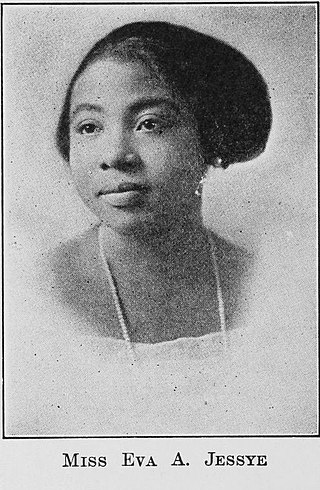
Eva Jessye was an American conductor who was the first black woman to receive international distinction as a professional choral conductor. She is notable as a choral conductor during the Harlem Renaissance. She created her own choral group which featured widely in performance. Her professional influence extended for decades through her teaching as well. Her accomplishments in this field were historic for any woman. She collaborated in productions of groundbreaking works, directing her choir and working with Virgil Thomson and Gertrude Stein on Four Saints in Three Acts (1933), and serving as musical director with George Gershwin on his innovative opera Porgy and Bess (1935).
Edward Matthews was a pioneering African-American baritone opera singer.
Lord Byron is an opera in three acts by Virgil Thomson to an original English libretto by Jack Larson, inspired by the historical character Lord Byron. This was Thomson's third and final opera. He wrote it on commission from the Ford Foundation for the Metropolitan Opera (Met), but the Met never produced the opera. The first performance was at Lincoln Center, New York City on April 20, 1972, by the music department of the Juilliard School with John Houseman as stage director, Gerhard Samuel as the conductor and Alvin Ailey as the choreographer. A performance of a revised version, by the composer, took place in 1985 with the New York Opera Repertory Theater.

The Mother of Us All is a two-act opera composed by Virgil Thomson to a libretto by Gertrude Stein. Thomson and Stein met in 1945 to begin the writing process, almost twenty years after their first collaborative project, the opera Four Saints in Three Acts. Stein wrote the libretto in the winter of 1945–46 before sending it to Thomson in March. After Stein's death in July, Thomson began working on the score, which he finished within just a few months. The opera centers around Susan B. Anthony, one of the major figures in the fight for women's suffrage in the United States, with a supporting cast of characters both fictional and based on other historical figures. Thomson famously described the work as a "pageant".
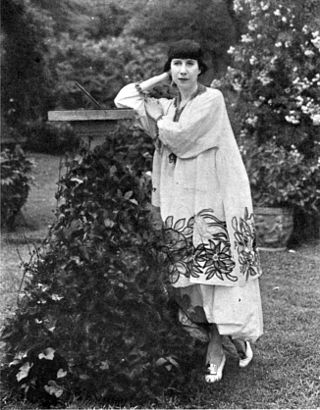
Florine Stettheimer was an American modernist painter, feminist, theatrical designer, poet, and salonnière.

Henry McBride was an American art critic known for his support of modern artists, both European and American, in the first half of the twentieth century. As a writer during the 1920s for the newspaper The New York Sun and the avant-garde magazine The Dial, McBride became one of the most influential supporters of modern art in his time. He also wrote for Creative Art (1928-1932) and Art News (1950-1959). Living to be ninety-five, McBride was born in the era of Winslow Homer and the Hudson River School and lived to see the rise of Jackson Pollock, Mark Rothko, and the New York School.
Doctor Faustus Lights the Lights (1938) is a libretto for an opera by the American modernist playwright and poet Gertrude Stein. The text has become a rite of passage for avant-garde theatre artists from the United States: La MaMa Experimental Theatre Club, Judson Poets' Group, The Living Theatre, Richard Foreman, Robert Wilson, and The Wooster Group have all produced the piece.
Encompass New Opera Theatre is a professional opera company located in New York City which specializes in premiering new productions, and reviving 20th century operas by American and international composers. A member of Opera America, Encompass was founded in 1975 by Nancy Rhodes who remains the company's Artistic Director. Since its founding, Encompass has produced over 50 fully mounted operas with orchestra as well as staged readings of more than 150 new works.
Clamma Churita Dale is an American operatic soprano. She portrayed "Bess" in the highly successful 1976 Houston Grand Opera production of Porgy and Bess. The show was transferred from Houston to Broadway and Dale was awarded a 1977 Drama Desk Award for Best Actress in a musical and received a Tony Award nomination. She won a Grammy award in 1978 for Best Opera Recording of the Porgy & Bess soundtrack.
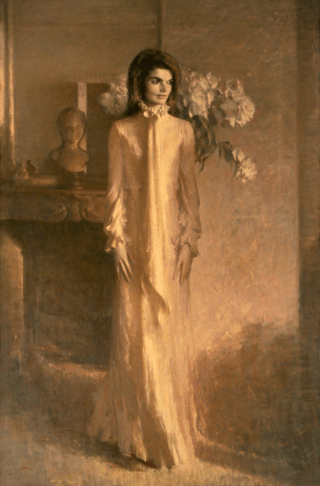
Jackie O is a chamber opera in two acts composed by Michael Daugherty to a libretto by Wayne Koestenbaum. The 90-minute work, commissioned by Houston Grand Opera in 1995 and premiered in 1997, is inspired by American musical and popular culture of the late 1960s and episodes in the life of Jacqueline Kennedy Onassis.

Western University (Kansas) (1865–1943) was a historically black college (HBCU) established in 1865 (after the Civil War) as the Quindaro Freedman's School at Quindaro, Kansas, United States. The earliest school for African Americans west of the Mississippi River, it was the only one to operate in the state of Kansas.

Betty Allen was an American operatic mezzo-soprano who had an active international singing career during the 1950s through the 1970s. In the latter part of her career her voice acquired a contralto-like darkening, which can be heard on her recording of Sergei Prokofiev’s Alexander Nevsky with conductor Eugene Ormandy and the Philadelphia Orchestra. She was known for her collaborations with American composers, such as Leonard Bernstein, Aaron Copland, David Diamond, Ned Rorem, and Virgil Thomson among others.
Fig Trees is a 2009 Canadian operatic documentary film written and directed by John Greyson. It follows South African AIDS activist Zackie Achmat and Canadian AIDS activist Tim McCaskell as they fight for access to treatment for HIV/AIDS. It was also inspired by Gertrude Stein and Virgil Thomson's opera Four Saints in Three Acts. The film premiered at the 59th Berlin International Film Festival where it won the Teddy Award for Best Documentary.
William Brown was an American operatic tenor.

27 is an opera by composer Ricky Ian Gordon and librettist Royce Vavrek in a prologue and five acts that explores the relationship of Gertrude Stein and Alice B. Toklas, and the salons that they hosted at their residence at 27 rue de Fleurus in Paris. The work was commissioned by Opera Theatre of Saint Louis for mezzo-soprano Stephanie Blythe. The full cast of five singers was featured on the cover of the June 2014 issue of Opera News. The opera premiered on June 14, 2014, in a production directed by James Robinson and conducted by Michael Christie at the Loretto-Hilton Center in St. Louis, Missouri. The world premiere was recorded by Albany Records.
James Peyton Atherton Jr was an American tenor and artistic director. Classically trained, he went on to sing with numerous American opera companies. He also performed on stage in Europe.
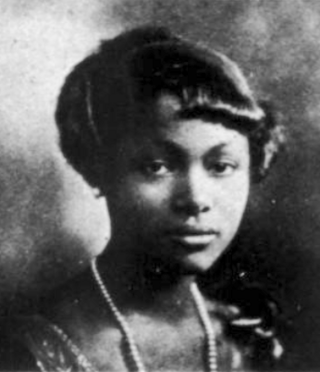
Ruby Mae Greene was an American singer, best known as the subject of a 1928 painting by James Ormsbee Chapin, titled "Ruby Green Singing".
References
- ↑ Gertrude Stein, Writings 1903–1932. Catharine R. Stimpson and Harriet Chessman, eds. New York: Library of America, 1998, p. 923 ISBN 1-883011-40-X
- 1 2 "Eva Jessye", Eva Jessye Collection, African American Music Collection, University of Michigan, accessed December 4, 2008
- ↑ Houseman, John, Run Through: A Memoir. New York: Simon & Schuster, 1972, ISBN 0-671-21034-3
- ↑ "Four Saints in Three Acts". Internet Broadway Database . Retrieved January 24, 2015.
- ↑ Tommasini (1997) p. 241
- ↑ Meckna, Michael (1986). Virgil Thomson: A Bio-Bibliography. New York: Greenwood Press. pp. 5–6. ISBN 0-313-25010-3.
- ↑ The New York Times May 28, 1941 P. 32
- 1 2 Collins-Hughes, Laura (September 20, 2022). "'Four Saints in Three Acts' Review: An Opera Becomes a One-Man Show". The New York Times. ISSN 0362-4331 . Retrieved January 3, 2023.
- ↑ "Four Saints in Three Acts - Lucille Lortel Theatre". lortel.org. July 28, 2022. Retrieved January 3, 2023.
- ↑ Finkle, David (September 21, 2022). "Four Saints in Three Acts: Gertrude Stein's Prose-Poem Brilliantly Played". New York Stage Review. Retrieved January 3, 2023.
- ↑ Shaw, Helen (September 22, 2022). "An Actor's One-Man Apotheosis". The New Yorker. Retrieved January 3, 2023.
- Allmer, Patricia; Sears, John, eds. (2017). 4 Saints in 3 Acts: A Snapshot of the American Avant-garde in the 1930s. Manchester: Manchester University Press. ISBN 978-1-5261-1303-0.
- Southern, Eileen. 1997. The Music of Black Americans: A History. 3rd edition. New York: W. W. Norton. ISBN 0-393-03843-2 [cloth] ISBN 0-393-97141-4 [pbk]
- Tommasini, Anthony. 1998. Virgil Thomson: Composer on the Aisle. New York: W. W. Norton. ISBN 0-393-31858-3
- Watson, Steven. 1998. Prepare for Saints: Gertrude Stein, Virgil Thomson, and the Mainstreaming of American Modernism. New York: Random House. ISBN 0-679-44139-5